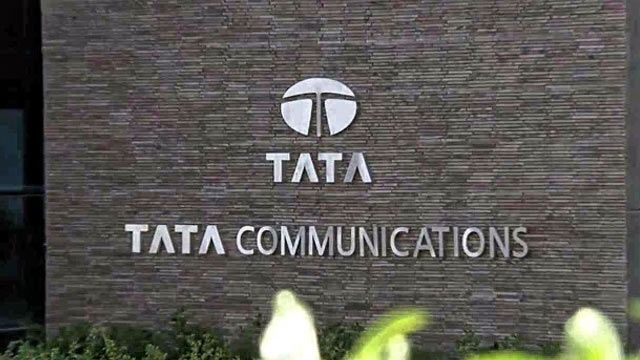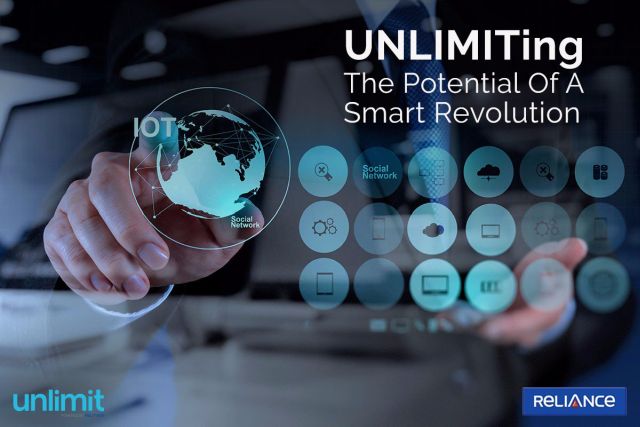
by admin | May 25, 2021 | Markets, Opinions, Technology
 By Amit Kapoor,
By Amit Kapoor,
The world stands on the brink of the Fourth Industrial Revolution, powered by a wide range of new technology breakthroughs — Artificial Intelligence, Machine Learning, advanced robotics, Internet of Things, cloud computing and 3D printing — and the revolution is expected to result in major changes in the labour market globally by reducing the demand for middle-skilled workers doing repetitive tasks, and increasing the demand for more highly-skilled workers and also low-skilled workers doing non-routine work.
While many developed countries, such as the US, Japan and several European economies, are already experiencing this labour market polarisation, the market is also hollowing out in many developing countries — although at a rate slower than the developed world (World Development Report, 2016).
In India’s case, this polarisation can be seen in the organised manufacturing sector, where the share of high-skilled occupations in total manufacturing employment increased by more than three percentage points, while the share of middle-skilled jobs decreased by 6.3 percentage points from 1993-94 to 2011-12. Looking at the impact of technological progress on various manufacturing industries in India, capital-intensive industries — automobile manufacturing, for instance — have a greater probability of adopting advanced automation and robotic technologies, compared to the labor-intensive manufacturing industries such as textile, apparel, leather, and footwear, and paper manufacturers.
Further, in the services sector, particularly in the IT sector, e-commerce, banking and financial services and health care services, there is a huge potential for automation technologies, which would increase the demand for skilled workers and reduce the demand for middle-skilled workers.
However, in India, over 80 percent of the working population is engaged in low-skilled jobs in the unorganised sector. These workers aspire to join the middle-skilled workforce in the organised sector to raise themselves from poverty. However, the changing nature of work due to technology advancements in the organised sector prevents their upward mobility and any improvement in their incomes.
Addressing the challenges induced by technological advancements requires reforms in India’s higher education system. The institutes of higher learning should redesign the course curriculum by understanding the key market transitions amidst the technological advancements. This would enable the country to create a workforce which could be placed in the positions demanded by the companies in the digital era and thus bridge the skill gap in the labour market.
However, looking at the current state of higher education in India, one can perceive that it is not just the quality of the system which needs to be improved, there is also much to be done in terms of the number of students enrolled in institutes of higher learning and heterogeneity existing in access to higher education based on socio-economic status, gender and also region. The Gross Enrollment Ratio (GER) in tertiary education in India is 26.9 per cent, which is lower than that of China (48.4 per cent), Indonesia (27.9 per cent) and the Philippines (35.3 per cent), among others.
Further, the GER in India for the male population is 26.3 per cent and 25.4 per cent for females. The GER also varies across different social groups. For the Scheduled Castes it is 21.8 per cent and 15.9 percent for the Scheduled Tribes.
There are also wide variations in the number of colleges for higher education across different states in India, with the lowest number of seven colleges in Bihar for every 0.1 million of eligible population to 51 in Telangana and Karnataka. The top eight states in terms of highest number of colleges in India are Uttar Pradesh, Maharashtra, Karnataka, Rajasthan, Andhra Pradesh, Tamil Nadu, Gujarat, and Madhya Pradesh, which have 28 or more colleges per 0.1 million of the population.
The disparity in the distribution of the colleges is also seen across different districts in these states, with the top 50 districts having about 32.6 per cent of the colleges.
In addition to the inequalities existing in the access to institutions for higher education, another issue with the state of higher learning in India is that a majority of the students are enrolled in undergraduate programmes, compared to masters and the doctoral programmes. Moreover, at the undergraduate level, there is a low pass out rate of the students — of the 2,90,16,350 students enrolled, the number of pass outs have been 64,19,639 in 2017.
Given that the Indian system of higher education faces multiple challenges of low gross enrollment in its colleges and universities, with most students settling on undergraduate studies, along with various socio-economic inequalities existing in access to higher learning, it is imperative for the country to address these issues.
Further, emphasis must be given on increasing the number of students who pass out of colleges/universities, along with increasing enrollment numbers.
The technology-induced skill gap which the Indian economy is facing across its different sectors is bound to increase with the given higher education system. The change has to be brought from outside the existing constructs. Improvement in the teaching methodology from the traditional lecture courses, accreditation of online courses and redesigning the course curriculum to make it industry-relevant are some of the ways the technology-led changes in the labor market can be dealt with.
(Amit Kapoor is chair, Institute for Competitiveness, India. The views expressed are personal. He can be contacted at amit.kapoor@competitiveness.in and tweets @kautiliya. Deepti Mathur, senior researcher at large with Institute for Competitiveness, has contributed to the article)
—IANS

by admin | May 25, 2021 | Business, Corporate, Corporate Buzz, Emerging Businesses
 New Delhi : In an effort to bring global connectivity to consumer electronics and industrial Internet of Things (IoT) devices, Tata Communications on Thursday joined hands with Taiwan’s largest mobile network operator Chunghwa Telecom.
New Delhi : In an effort to bring global connectivity to consumer electronics and industrial Internet of Things (IoT) devices, Tata Communications on Thursday joined hands with Taiwan’s largest mobile network operator Chunghwa Telecom.
As part of this partnership, Chunghwa Telecom will tap into additional revenues by connecting IoT devices through Tata Communications’ “MOVE-IoT Connect” platform.
The “MOVE-IoT Connect” allows IoT devices to be deployed quickly both locally and internationally by leveraging Tata Communications’ ecosystem of mobile network operators worldwide.
“Our aim is to generate millions of subscriptions from IoT devices in the next three years, and our work with Tata Communications will help us fulfil this ambition,” said Ming-Shih Chen, President of Mobile Business Group, Chunghwa Telecom.
“Tata Communications’ ‘MOVE’ will give our customers’ IoT services borderless network coverage across 200 countries, ensuring a consistently high-quality and reliable user experience,” he added.
The Taiwanese electronics industry output is expected to be worth $ 228 billion in 2018 and the wearables market grew at double digits in both volume and value terms in 2017.
One of Chunghwa Telecom’s first Tata Communications’ “MOVE-IoT Connect” customers is TaiDoc, which manufactures premium medical devices to improve people’s health and the quality of life.
TaiDoc will use “MOVE-IoT Connect” to extend the reach of its devices seamlessly to countries such as China, Thailand and the US.
“We’re excited to work with Chunghwa Telecom and other leading mobile network operators around the world to build a truly global ecosystem of connectivity, and spur IoT adoption by businesses worldwide,” said Anthony Bartolo, Chief Product Officer, Tata Communications.
According to the IDC, the worldwide installed base of IoT endpoints will grow from 20 billion by the end of 2018 to more than 82 billion in 2025.
“Each of those devices requires connectivity to enable exchange of data and successful management and security. The advent of 5G is expected to serve as a boon for cellular, which will grow to represent 20.6 per cent of total connections by the end of 2025,” noted Hugh Ujhazy, Associate Vice President, Telecom & IoT Practice Lead, IDC Asia/Pacific.
—IANS

by admin | May 25, 2021 | Markets, Opinions, Technology
 By Rajendra Shende,
By Rajendra Shende,
Srinivasan leaves his office in Bengaluru where the lights and air-conditioners are switched off when sensors planted inside notice that he is leaving. He is prompted on his e-watch as to how much time it would take for the elevator to arrive on his floor, based on movement-recognition by sensors at the entry of the corridor.
He utilises that time to check on his smart phone, connected to his refrigerator, the items that he needs to buy on the way. His smart phone has already received a message from the sensor in his electric vehicle (EV) that there is enough charge in the battery to reach home if he takes the club route, as other routes have heavy traffic.
Welcome to the world of Internet of Things (IoT), Cloud Networking and Machine Learning.
The numbers are crazy, but as per the presentations given by Ericsson’s former CEO Hans Vestburg in 2010 — and repeated by Cisco — by 2020, 50 billion devices and machines would be talking to each other. That is about six times the human population. By 2030, as per one estimate from IBM, one trillion devices would be connected to each other in the Cloud, networking more than 100 times the human population.
Scary? If yes, then the story is not even complete.
There are more than five billion mobile phone users among the world’s population of 7.5 billion. That heralds 100 percent market penetration for digital dialogue very soon. Half the world already uses Internet and digital social media. Countries are competing with each other for declaring the targets of 100 per cent EVs and banning petrol and diesel cars “earlier than thou” and growth rates of EVs in many countries are more than 60 percent.
After the announcement of aggressive policies in the manufacture of EVs by China, France and the UK, India’s EV story is “on the verge of imploding” as per the Indian press. Today’s global car population of more than one billion would double by 2040. The share of EVs is likely to be 40-60 per cent. Growth rates of home appliances in India and China are more than 10 per cent.
Now take a pause and imagine something else: The horrendous amount of e-waste generated as the new models and latest versions arrive and as the existing appliances and devices retire and become “unwanted”.
The sheer numbers of not only sensors but lithium batteries needed in a sharply growing market of EVs, driverless cars, mobile and smart phones, clean energy storage, along with rare-earth metals needed for sensors and PCBs for internet-based computing and CCTVs point to a nerve-racking and daunting challenge to tackle e-waste.
That waste is the dark side of the bright story of the global future. These devices, when discarded for the new versions or at the end of their life, would pose life-threatening consequences to our world. Improper and unsafe treatment and disposal through open burning or in dumpsites pose significant risks to the environment and human health.
Good news, however, is that the sound management of e-waste — starting with legislation and its enforcement — can create new areas of employment and drive entrepreneurship. The latest report of the International Telecom Union (ITU) and UN University (UNU) states that new era of emerging opportunities has arrived.
E-waste contains precious metals, including lithium, gold, silver, platinum and palladium, but it also contains valuable bulky materials such as iron, copper and aluminium along with plastics that can be reprocessed in plasma reactors and recycled. Overall, UNU estimates that the value of precious metals in e-waste is worth $60 billion.
In 2016, the Indian government, under Prime Minister Modi, issued the E-Waste (Management) Rules that place responsibility on electronic goods manufacturing companies and bulk consumers to collect and channel e-waste from consumers to authorised re-processing units. Firms are now required to set yearly collection targets linked to their production numbers. These are steps in the right direction to enhance the liability of the companies, if the enforcement is effective.
(Rajendra Shende is Chairman, TERRE Policy Centre, and Director, UNEP. The views expressed are personal. He can be contacted at shende.rajendra@gmail.com)
—IANS

by admin | May 25, 2021 | Business, Business Summit, Corporate, Corporate Buzz, Emerging Businesses, Events, Large Enterprise
 By Sourabh Kulesh,
By Sourabh Kulesh,
Mumbai : Reliance Group’s Unlimit — an Internet of Things (IoT) venture for enterprises — and tech giant IBM on Monday announced a collaboration to co-create IoT solutions for industry verticals, including automotive, insurance, utilities and industrial automation.
The two companies are developing IoT solutions for implementation across Reliance Group companies, addressing key segments such as user-based insurance (Reliance general insurance), asset and vehicle tracking (Reliance commercial finance), tower monitoring (Reliance communications) and transformer maintenance (BSES & Reliance energy).
“With 2.7 billion connected devices and growing, Indian economy, enterprises and consumers are embracing IoT at a rampant pace,” Harriet Green, General Manager, Watson IoT, Customer Engagement and Education, IBM, told reporters here at the first-ever IBM ‘Genius of Things (GoT)’ summit.
“Our collaboration is an example of IBM leading the global IoT movement with a growing ecosystem of clients and partners. This underscores how IBM and ‘Unlimit’ are taking the power of IoT to Indian enterprises and capturing the phenomenon of digital disruption for joint client innovation,” she added.
As part of the collaboration, IBM will provide its Watson IoT Platform to collect and connect data, including sensor data, from devices and provide use-case specific dashboards.
“As India is becoming the hot bed for digital disruption, we are confident that our powerful technology platform, with Watson IoT at its core, will provide enterprises with a flexible, scalable and secure solution,” Juergen Hase, CEO, ‘Unlimit’, told reporters here.
Unlimit will design IoT use cases for various industries in the Indian market and build them on the IBM Watson IoT Platform, which provides device registration, IoT rules, advanced analytics, visualisation, reports and cognitive capabilities for each use case.
As a result, rather than approaching businesses on one-by-one basis, Unlimit will provide customers with access to these capabilities so that they can leverage IoT-driven insights and information for business decisions, create new product offerings and revenue streams.
The Unlimit IoT platform aired at the enterprise users was launched in April this year. Unlimit aims to provide a common platform for vertical industries such as automation, healthcare, agriculture, financial services and asset tracking.
Green said that IBM’s amazing Cloud capabilities enable all communication and infrastructure that is needed to work for the transformation of businesses.
“We have a set of applications that allow us track, record and work together effectively through exceptional software. ‘Watson’, designed especially for IoT, also works as a differentiator for the company,” Green added.
Watson analyses the massive structured and unstructured data to help digital transformation of companies.
IBM also announced key clients and partnerships with Kone, KPIT, Avanijal Agri Automation, Acculi Labs, Tech Mahindra and Arrow Electronics to drive IoT growth in India.
“With an unparalleled, growing global ecosystem of over 6,000 clients, 1,400 partners and 750 IoT patents, IBM is uniquely positioned to lead the IoT revolution across industries and help companies in India plug into critical new revenue streams,” said Karan Bajwa, Managing Director, IBM India/South Asia.
Through a multi-year agreement with IBM, Kone will tap into the IBM IoT Cloud Platform to connect, remotely monitor and optimise the management of millions of elevators, escalators, doors and turnstiles in buildings.
KPIT, a global technology company that specialises in product engineering and IT solutions across several industries, will use IBM’s IoT Continuous Engineering to deliver high-quality designs and connected products efficiently.
Avanijal Agri Automation will use the company’s ‘Irrigation Automation System’ solution to collect and log irrigation data from various sensors on the field for agronomical analysis which helps further enhance the yield on a continuous basis.
Acculi Labs will leverage IBM’s IoT platform to build and scale “Lyfas” — a scalable rural healthcare solution to smooth the flow of data from the edge device to cloud for further analysis and prognostics.
With IBM IoT solutions, Arrow Electronics will offer more than 160 industry-leading cloud services such as artificial intelligence (AI), Blockchain, advanced data analytics and cyber security to customers.
Tech Mahindra is harnessing IBM technology for designing experiences through orchestration of systems, sensors, devices, platforms, external data, back-end systems, analytics engine and much more.
(Sourabh Kulesh can be contacted at sourabh.kulesh@ians.in)
—IANS




